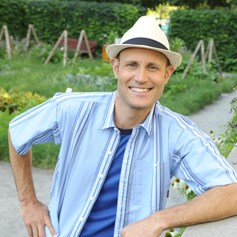Road infrastructures are generally quite unsightly and poorly integrated into the urban environment. One of the most effective ways to integrate these huge masses of concrete is certainly to accompany them or to cover them with plants. Here are some interesting ideas to make the future Champlain Bridge greener. I hope these ideas will inspire engineers and architects working on the creation of this new bridge. On the introduction picture, you can see the concept of a green bridge created by Italian designer Angelo Tomaivolo and his team.
My proposal is simple: make the new Champlain Bridge a garden! Imagine cars, buses, bicycles and pedestrians runing in the middle of a beautiful oasis hanging over the St. Lawrence River! I think a green bridge would be an architectural element of great symbolic power that the citizens of the greater Montreal region could be proud of. Such a bridge would also allow our city to stand out and be more visible than ever on the international scene.
Contrary to popular belief, trees and plants do not cause damage to buildings and roads. A rootlet less than one millimeter in diameter – that’s the first part of a root that comes into contact with the environment – just cannot come through a concrete wall. However, it is true that building foundations and other infrastructures that are cracked could allow roots to infiltrate. But what would be the advantage for a tree to explore concrete with its roots where there is neither water nor nutrients? None! On the contrary, some studies have shown that asphalt has a longer lifespan (up to ten years longer according to some studies) when shaded by the foliage of trees. This way, UV radiation, rain and wind have less adverse effects on this material. In addition, maintenance costs are reduced by half when pavement is located under shade trees. Plants also reduce air pollution and improve air quality near roads. In addition of capturing CO2 and turning it into oxygen, a single tree can extract up to 7,000 particles of soot and dust in a liter of air!
The idea of a green Champlain Bridge was inspired by an impressive project that is currently captivating the Britons. Indeed, in a few years, a floating paradise will be erected over the Thames, the river that flows through London. Thus, the British government has granted some 30 million pounds Sterling for the construction of the Garden Bridge. This idea of a green bridge was proposed by British actress Joanna Lumley, who played in the popular television series The Avengers and in movies like James Bond and The Pink Panther. Mrs. Lumley first launched this concept about fifteen years after the death of Princess Diana, but it was only after the Summer Olympic Games held in London that her vision began to be considered as a possibility.
The Garden Bridge (www.gardenbridgetrust.org) was designed by Thomas Heatherwick, designer of the famous Cauldron for the London 2012 Olympics. People who will use this pedestrian bridge will pass through a natural looking landscape created by Dan Pearson. This landscape made of grasses, shrubs and small trees was inspired by wetland plants and willow thickets that grew at one time along the banks of the river Thames.


The famous High Line (www.thehighline.org), in Manhattan, is another inspiring suspension garden. This urban park was built on an abandoned portion of an old aerial railway over 2 kilometers long. During Rudolph Giuliani’s mandate, the city administration planned the railway to be demolished. But in 1999, Joshua David and Robert Hammond, two residents of the neighborhood where the railway is located, founded an association called Friends of the High Line in order to save the structure and giving it a second life. They suggested to build a suspension park like the Promenade plantée in Paris – a landscaped area created on a former railway line that runs from the Place de la Bastille to the boulevard périférique in the 12th arrondissement. With the mobilization of many local residents, the association has gained the support of the new mayor, Michael Bloomberg, and in 2004 the city funding was allocated for the project. The first of three sections of this park was inaugurated in 2009.
This project has contributed to the rebirth of this neighborhood of New York. In addition of being the pride of New York citizens, the High Line has led to a significant economic growth of the area, promoting the construction of dozens of businesses and real estate projects near the suspension park. On the other hand, crime is extremely low in the park. Some minor infractions are reported, such as the presence of dogs or bikes, but at a rate below that observed in Central Park. Considered a symbol and a catalyst, the High Line has encouraged representatives of many other US cities to create similar projects.







